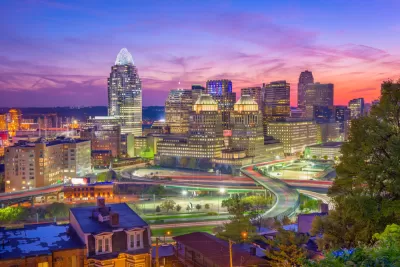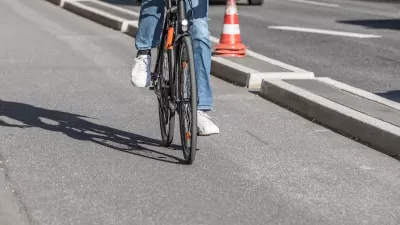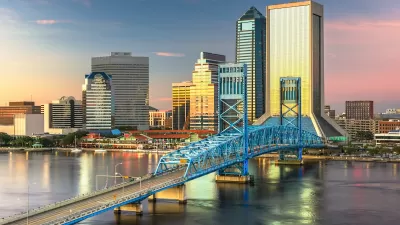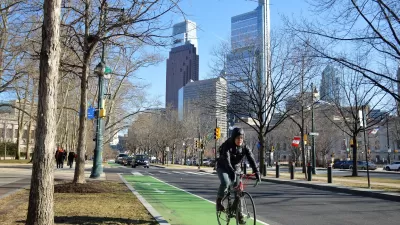A new in-house team dedicated to pedestrian safety at Cincinnati City Hall and a new complete streets ordinance are some of the changes underway in Cincinnati.

The Cincinnati City Council approved ordinance in October to create an in-house pedestrian safety crew, according to an article at the time by Anna Azallion for WCPO. The council acted to implement the new safety crew after a string of pedestrian crashes near the University of Cincinnati. The city counted 200 collisions with pedestrians in the city up until that point in 2022.
“The in-house safety crew will work on pedestrian safety projects like the installation of temporary bump-outs, signage, pain and rubber speed cushions,” according to the article.
Kea Wilson picked up the news for Streetsblog USA this month, putting the news of context of a recent groundswell of political and public support for pedestrian safety improvements in the Queen City.
The city recently more than doubled its funding for pedestrian safety initiatives as part of its 2023 budget, and adopted a Complete Streets ordinance in December that will require DOT leaders to explain themselves when they choose not to include vulnerable road user facilities in road projects; citizen-led advocacy groups have also successfully fought for significant infrastructure improvements in their neighborhoods.
Wilson speaks with Mel McVay, vision zero manager for the city, who talks about the growing support for political safety in the safety as well as what to expect from the five-person crew in the future. “Many of the most-effective pedestrian-focused projects, McVay explains, don't actually require specialized knowledge to install, because they rely on simple, easy-to-work-with materials like bolted-down plastic dividers to prevent drivers form drifting over center-lines, or high-visibility paint to make crosswalks easier for motorists to see at night,” for example.
More more information about the city’s new complete streets ordinance, see another article written by Azaillon in December. “Under the new law, the Department of Transportation and Engineering (DOTE) will have a checklist to consider before moving forward with road improvement projects,” writes Azaillon. “The list includes five categories: bike facilities, sidewalk and curb ramps, traffic calming, safety improvements and comfort enhancements. Within those categories are things like bike lanes, sidewalks and speed humps.”
FULL STORY: Cincinnati Hires Dedicated In-House Crew To Build Pedestrian Infrastructure

Trump Administration Could Effectively End Housing Voucher Program
Federal officials are eyeing major cuts to the Section 8 program that helps millions of low-income households pay rent.

Planetizen Federal Action Tracker
A weekly monitor of how Trump’s orders and actions are impacting planners and planning in America.

Ken Jennings Launches Transit Web Series
The Jeopardy champ wants you to ride public transit.

Philadelphia Is Expanding its Network of Roundabouts
Roundabouts are widely shown to decrease traffic speed, reduce congestion, and improve efficiency.

Why Bike Lanes Are Good: An Explainer for the US Transportation Secretary
Sean Duffy says there’s no evidence that bike lanes have benefits. Streetsblog — and federal agencies’ own data — beg to differ.

California Invests Additional $5M in Electric School Buses
The state wants to electrify all of its school bus fleets by 2035.
Urban Design for Planners 1: Software Tools
This six-course series explores essential urban design concepts using open source software and equips planners with the tools they need to participate fully in the urban design process.
Planning for Universal Design
Learn the tools for implementing Universal Design in planning regulations.
Ada County Highway District
Clanton & Associates, Inc.
Jessamine County Fiscal Court
Institute for Housing and Urban Development Studies (IHS)
City of Grandview
Harvard GSD Executive Education
Toledo-Lucas County Plan Commissions
Salt Lake City
NYU Wagner Graduate School of Public Service





























